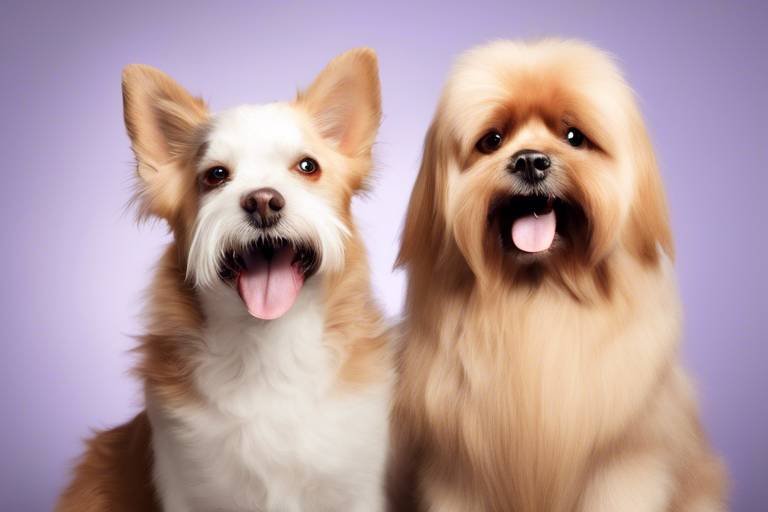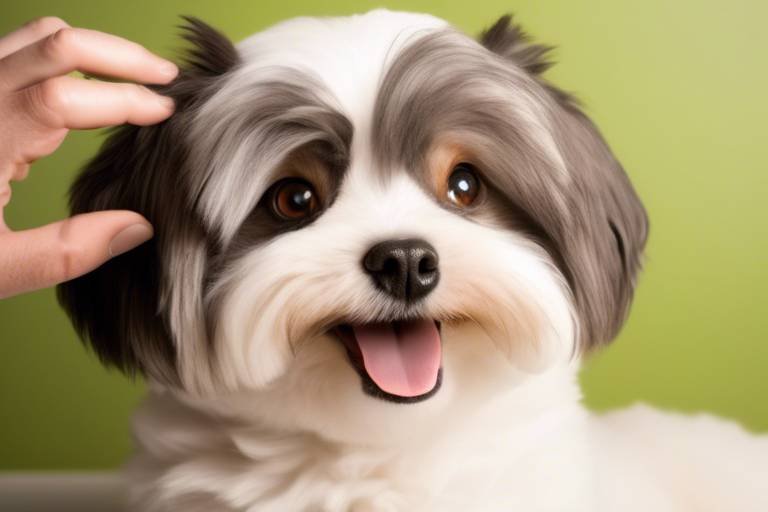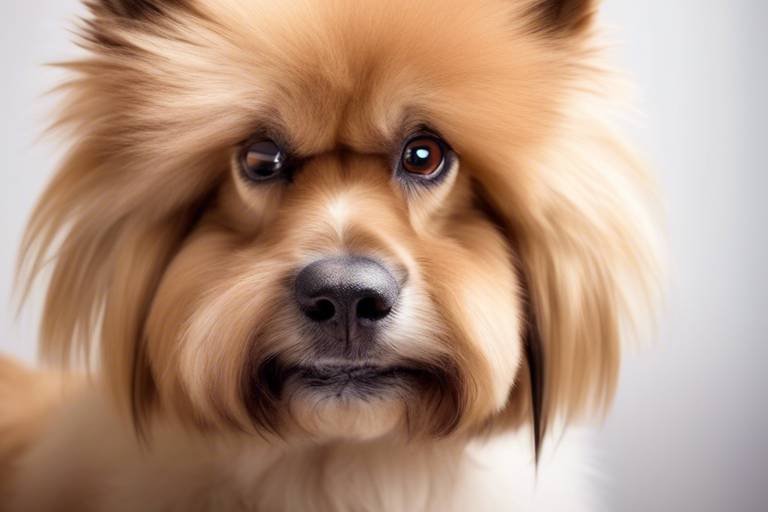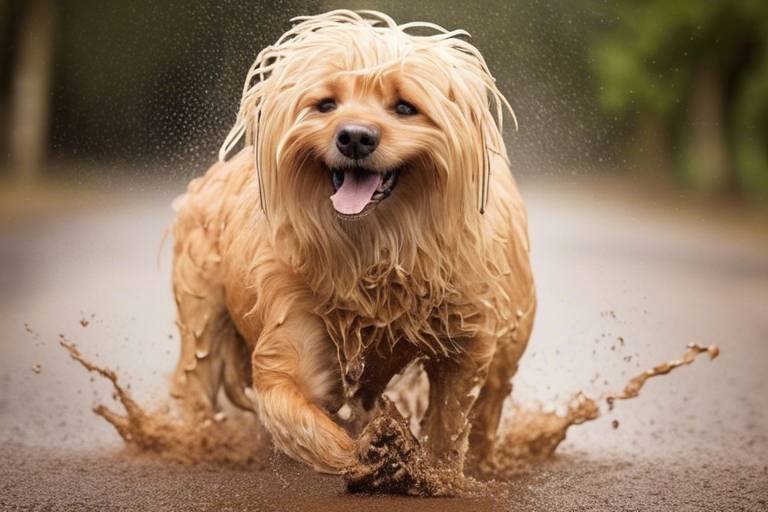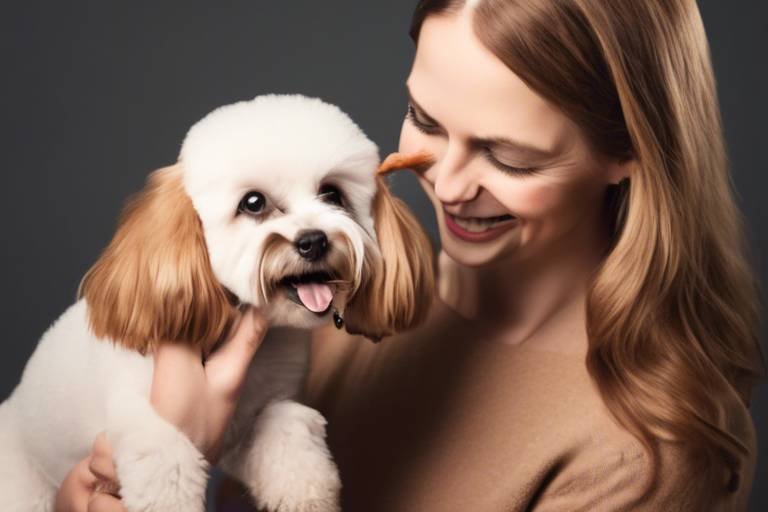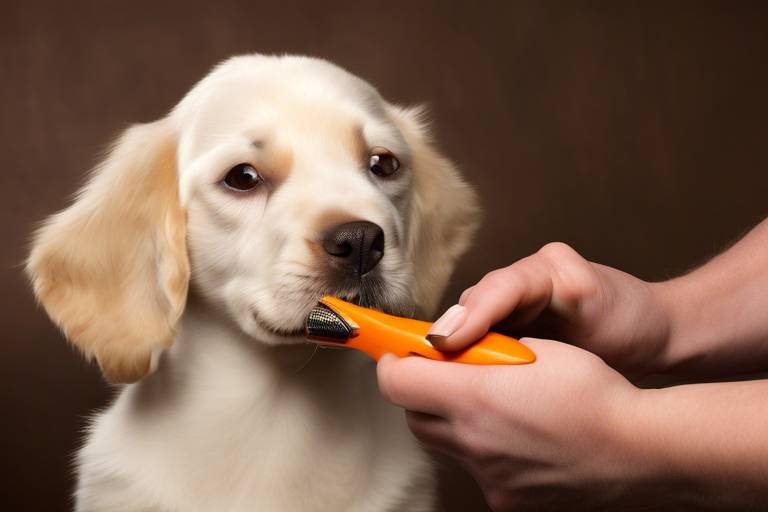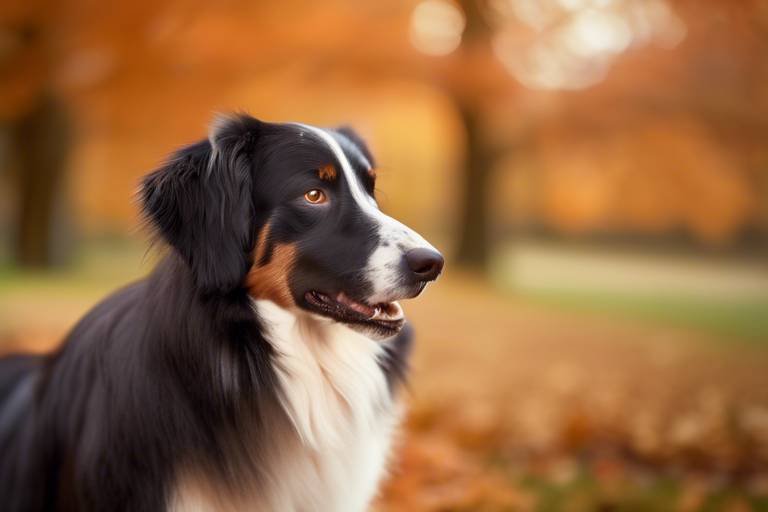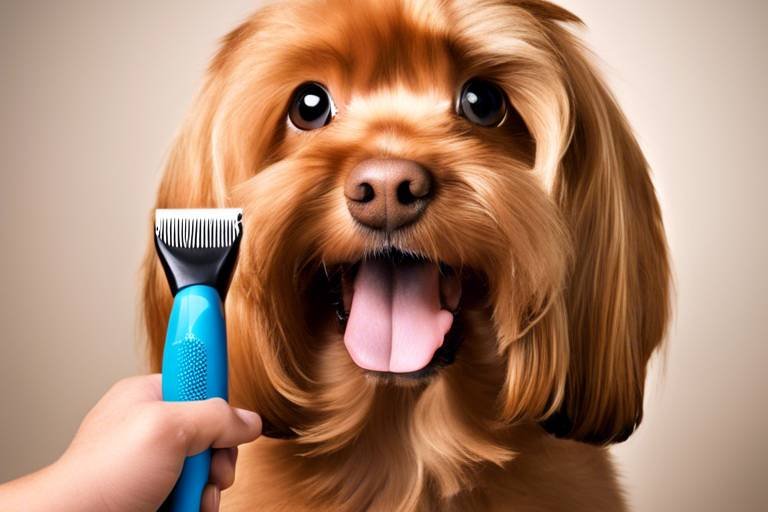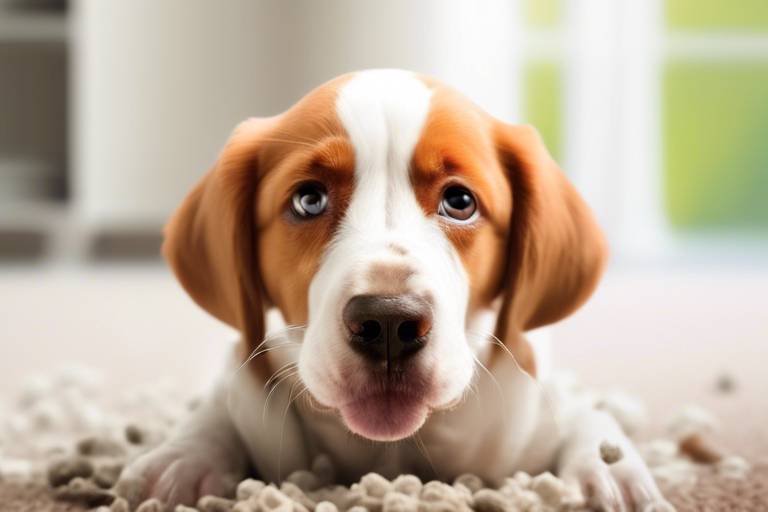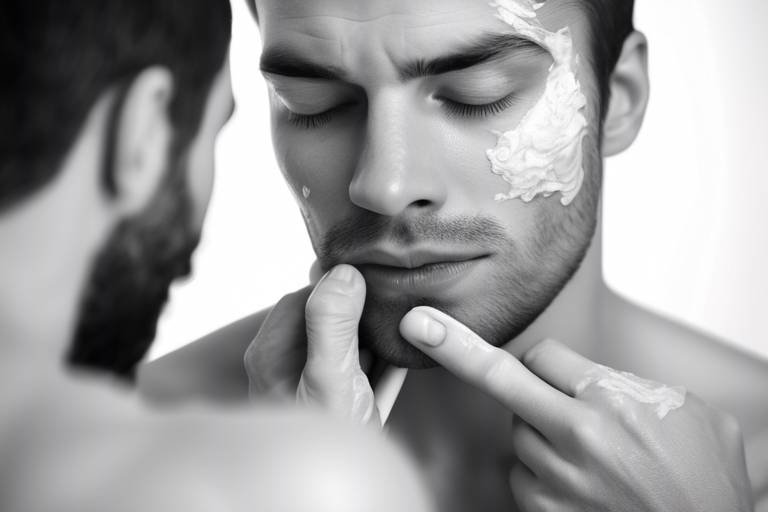Tips for Managing Grooming for Multiple Pets
Managing grooming for multiple pets can feel like trying to juggle flaming torches while riding a unicycle—challenging, but not impossible! With the right strategies in place, you can ensure that each furry friend receives the attention they deserve without turning grooming into a chaotic circus act. The key lies in organization, patience, and a sprinkle of creativity. In this article, we will explore effective methods to streamline your grooming routine, making it a breeze rather than a burden. So, grab your grooming tools and let's dive into the world of pet pampering!
Creating a consistent grooming schedule is crucial for managing multiple pets. Think of it as setting up a well-oiled machine where each part functions smoothly. Start by assessing each pet's grooming needs based on their breed, coat type, and personal quirks. For example, long-haired dogs might need more frequent grooming than short-haired ones. Once you have a clear picture, allocate specific time slots for each pet in your weekly calendar. This not only helps you stay organized but also ensures that each pet gets the attention they need without feeling rushed.
Consider using a simple table to keep track of your grooming schedule:
| Pet Name | Grooming Frequency | Grooming Day | Grooming Time |
|---|---|---|---|
| Buddy (Golden Retriever) | Weekly | Monday | 4 PM |
| Whiskers (Persian Cat) | Bi-weekly | Wednesday | 3 PM |
| Max (Beagle) | Every 10 days | Friday | 5 PM |
By sticking to this schedule, you’ll not only keep your pets looking fabulous but also help them get accustomed to grooming as a regular part of their routine.
Selecting appropriate grooming tools can make the process easier and more efficient. Imagine trying to cook a gourmet meal without the right utensils—it just wouldn’t work! The same goes for grooming your pets. Depending on the type of fur your pets have, the tools you choose will vary. Investing in high-quality grooming tools is like having a magic wand that transforms grooming from a chore into a delightful bonding experience.
Dogs have unique grooming needs based on their coat type, and having the right tools is essential. Here are some must-have items for dog grooming:
- Brushes: A slicker brush for long-haired breeds and a bristle brush for short-haired ones can work wonders.
- Clippers: If your dog needs a trim, investing in a good pair of clippers can save you trips to the groomer.
- Shampoos: Use pet-safe shampoos that cater to your dog's specific skin type.
Long-haired breeds require special attention. To keep their coats tangle-free and healthy, consider adding the following tools to your grooming kit:
- Detangling Brushes: These are fantastic for gently removing knots without pulling.
- Grooming Gloves: They help in removing loose fur while providing a gentle massage.
Short-haired breeds have different grooming needs. A simple grooming routine can keep their coats looking shiny and healthy. Here are some essential tools:
- Rubber Brushes: Great for removing loose hair and giving a good rubdown.
- Shedding Tools: These help control shedding and keep your home fur-free.
Cats also require regular grooming, though their needs differ from dogs. Gentle brushes are key here, as cats can be more sensitive. Here are some tools that can make cat grooming a breeze:
- Soft-Bristled Brushes: Perfect for removing loose fur without irritating the skin.
- Nail Clippers: Keeping your cat's nails trimmed is essential for their health and your furniture!
A calm and positive environment can significantly affect the grooming experience for your pets. Just like humans, pets can sense stress and anxiety, so it’s crucial to create a space where they feel safe and relaxed. Set up a designated grooming area that is quiet and free from distractions. You might even want to play some soothing music to enhance the atmosphere. Remember, the goal is to make grooming a pleasant experience, not a dreaded chore.
Incorporating treats and rewards can encourage pets to cooperate during grooming. Think of it as a little bribery that goes a long way! Offer small treats or praise during and after grooming sessions to create positive associations. This way, your pets will start looking forward to grooming time instead of dreading it.
Gradual introduction to grooming can help pets acclimate. Start by letting them sniff the grooming tools before using them. You might even want to brush them for just a few minutes at first, gradually increasing the time as they become more comfortable. This slow approach can reduce anxiety and build trust between you and your pets.
Q: How often should I groom my pets?
A: It depends on the breed and coat type. Long-haired pets generally require more frequent grooming compared to short-haired ones. Establish a routine based on your pet's specific needs.
Q: What if my pet hates grooming?
A: Try to make grooming a positive experience with treats and rewards. Gradually introduce them to grooming tools and techniques to reduce their anxiety.
Q: Can I groom my pets myself?
A: Absolutely! With the right tools and techniques, you can groom your pets at home. However, for certain breeds or specific grooming needs, you might want to consult a professional groomer.
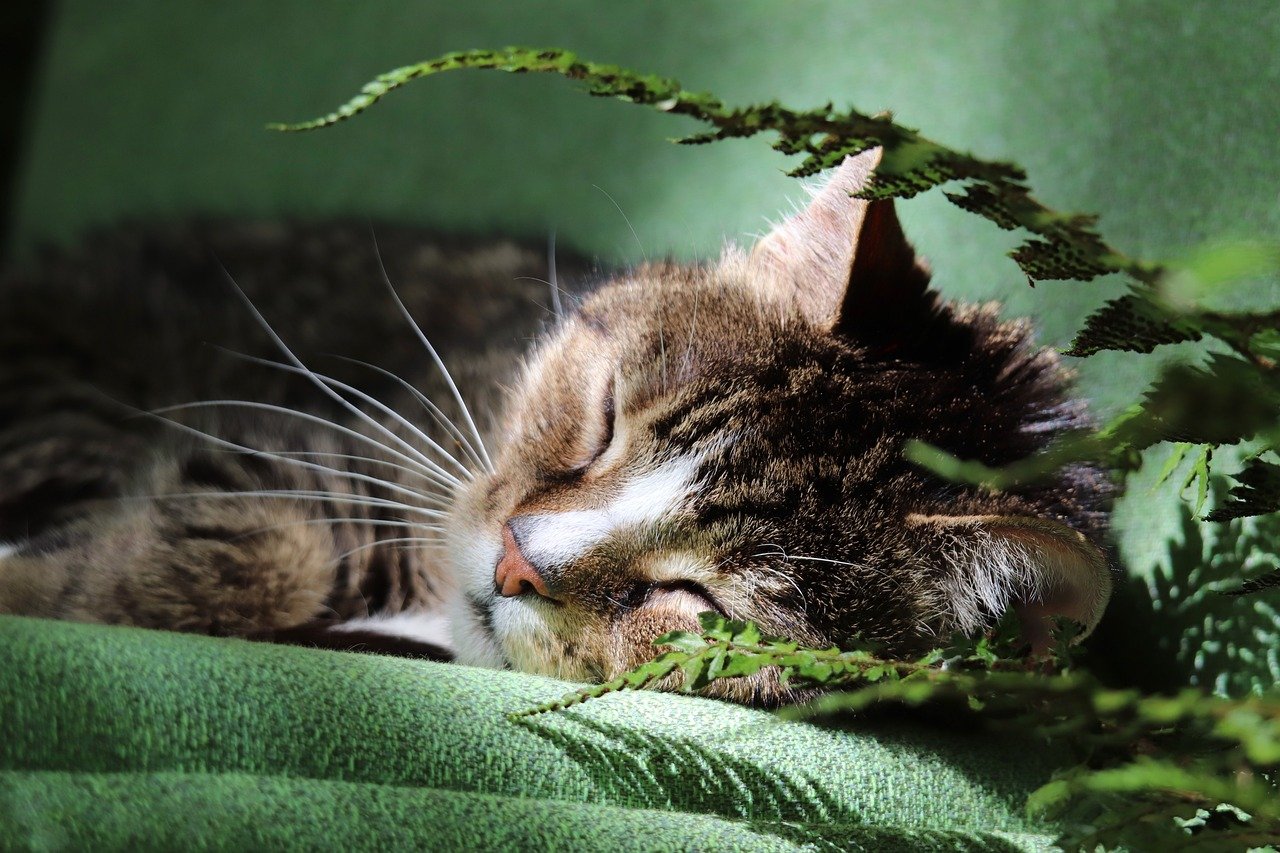
Establishing a Grooming Schedule
Creating a consistent grooming schedule is crucial for managing multiple pets effectively. Imagine trying to juggle the grooming needs of several furry friends without a plan—it's a recipe for chaos! To avoid feeling overwhelmed, start by assessing the individual grooming needs of each pet. For instance, dogs may require more frequent grooming than cats, especially if they have long hair. By understanding these differences, you can create a tailored schedule that accommodates everyone.
Begin by setting aside specific days and times dedicated to grooming. You might choose to groom one pet on a Saturday morning and another on Sunday afternoon. This way, you’re not cramming everything into one day, which can lead to stress for both you and your pets. Consider using a calendar or a scheduling app to keep track of grooming days. A visual reminder can be incredibly helpful, especially when managing multiple pets. You can even create a simple table to outline your grooming schedule:
| Pet Name | Grooming Frequency | Preferred Day | Time |
|---|---|---|---|
| Buddy (Dog) | Weekly | Saturday | 10 AM |
| Whiskers (Cat) | Bi-weekly | Sunday | 2 PM |
| Rex (Dog) | Monthly | First Monday | 4 PM |
In addition to frequency, consider the grooming style that suits each pet. Some pets may be more comfortable with shorter sessions spread throughout the week, while others might prefer longer, less frequent grooming. Pay attention to their reactions during grooming; if they seem anxious, it might be best to shorten the sessions and increase the frequency. This personalized approach can help build a positive grooming experience, making it something they look forward to rather than dread.
Another essential aspect of establishing a grooming schedule is to coordinate it with other activities in your pets' lives. For instance, if you have a dog that loves to play outside, schedule grooming after their playtime to minimize dirt and mess. Also, consider their shedding cycles; some pets may shed more during certain seasons, requiring more frequent grooming during those times.
Lastly, don’t forget to communicate with family members or anyone else involved in your pets’ care. Ensure everyone is on the same page regarding the grooming schedule. This way, you can divide responsibilities if needed, making it easier to manage grooming for multiple pets. After all, teamwork makes the dream work, right?
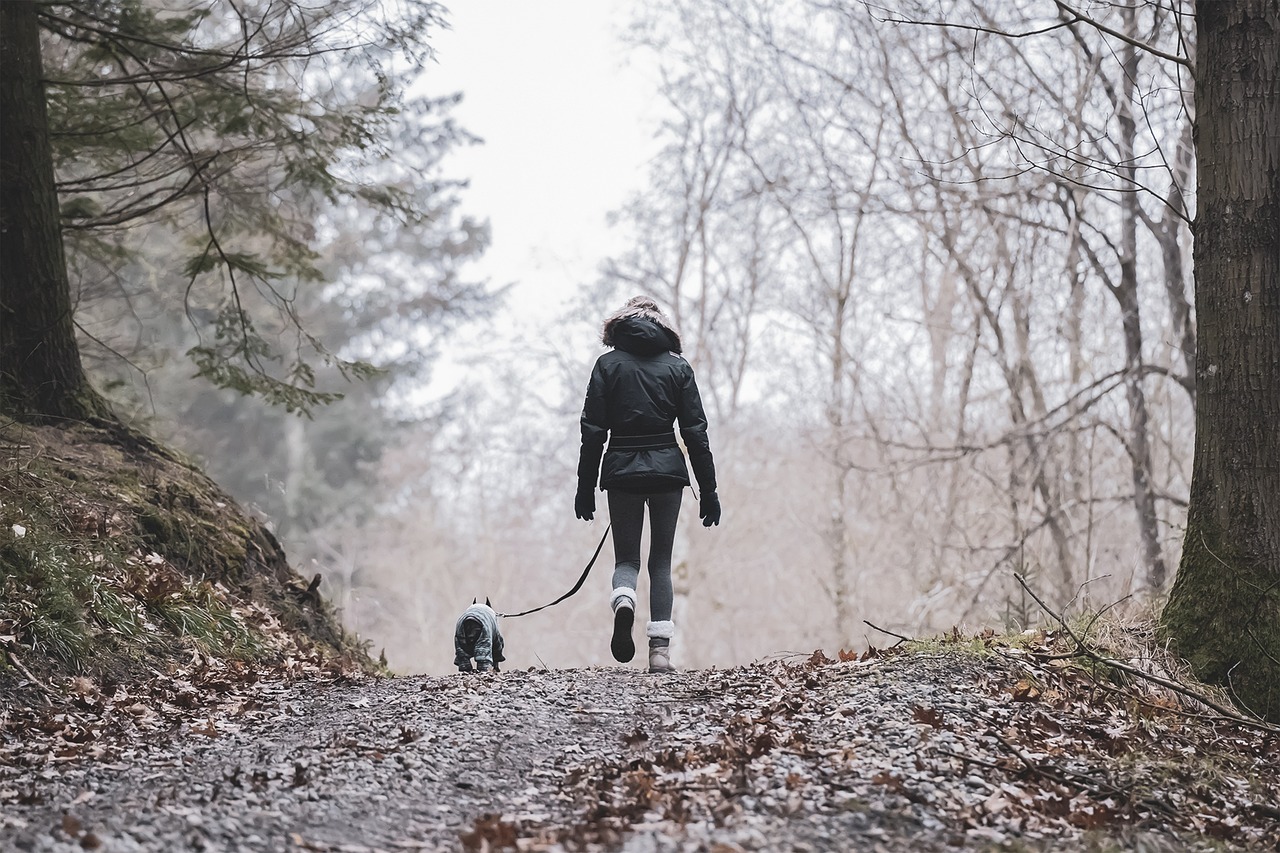
Choosing the Right Tools
When it comes to grooming multiple pets, selecting the right tools is not just a matter of convenience; it can truly make or break the entire grooming experience. Imagine trying to cut hair with dull scissors or paint with a brush that’s lost its bristles. Frustrating, right? The same principle applies to grooming your furry friends. Each pet has unique needs based on their breed, coat type, and even personality. Therefore, it’s essential to invest in grooming tools that cater specifically to each pet's requirements. This not only ensures a more effective grooming session but also helps keep your pets comfortable and happy.
First off, let’s talk about the basics. A well-stocked grooming kit should include the following essential tools:
- Brushes: Different brushes serve different purposes. For instance, slicker brushes are great for detangling, while bristle brushes help distribute natural oils in the coat.
- Clippers: If you have a pet that requires regular haircuts, investing in a quality clipper can save you both time and money in the long run.
- Shampoos: Always choose shampoos that are specifically formulated for pets. Human shampoos can irritate their skin.
Now, let’s break it down even further. Dogs, for example, have various grooming needs based on their coat type. Long-haired breeds like Golden Retrievers or Shih Tzus require specific tools to keep their coats free of tangles. You might want to consider:
- Detangling Brushes: These are specially designed to glide through long hair without pulling.
- Grooming Gloves: Not only do they help remove loose fur, but they also provide a soothing massage, making the experience enjoyable for your pet.
On the other hand, short-haired breeds like Beagles or Boxers have different grooming needs. For them, a simple rubber brush or shedding tool can work wonders in removing loose hair and keeping their coat shiny. It’s like giving them a mini spa day!
When it comes to cats, their grooming needs may differ significantly from dogs. Cats are often more sensitive and can be easily stressed by grooming. Therefore, choosing the right tools is crucial. Gentle brushes designed specifically for cats can help remove loose fur without causing discomfort. Additionally, nail clippers designed for feline use are essential to keep their claws healthy and trimmed. Remember, a calm and gentle approach is key when grooming your feline friends.
In conclusion, choosing the right grooming tools is essential for ensuring that your pets receive the best care possible. A well-equipped grooming kit tailored to the specific needs of each pet can make the process smoother and more enjoyable for both you and your furry companions. So, take the time to research and invest in quality grooming tools, and you’ll see the difference it makes in your pets' grooming routine.
Grooming Tools for Dogs
This article provides essential tips for pet owners on effectively managing grooming routines for multiple pets, ensuring each pet receives the care they need without overwhelming the owner.
Creating a consistent grooming schedule is crucial for managing multiple pets. This section discusses how to organize grooming times that accommodate each pet's needs while fitting into your daily routine.
Selecting appropriate grooming tools can make the process easier and more efficient. Here, we explore various grooming tools suited for different types of pets and their specific grooming requirements.
When it comes to grooming dogs, understanding their unique needs based on coat type is essential. Dogs can have a variety of fur textures and lengths, which means that the grooming tools you choose will significantly impact the overall grooming experience for both you and your furry friend. For instance, if you have a fluffy Golden Retriever, you wouldn't want to use the same tools as you would for a sleek Beagle. So, let's dive into the essential tools that will help keep your dog's coat healthy and shiny!
First, consider investing in a good quality brush. Brushes come in various types, including pin brushes, slicker brushes, and bristle brushes. Each serves a different purpose:
- Pin Brushes: Great for long-haired breeds as they help detangle knots and remove loose fur.
- Slicker Brushes: Perfect for removing mats and tangles, especially in curly or wiry coats.
- Bristle Brushes: Ideal for short-haired breeds to distribute natural oils and keep the coat shiny.
Next, clippers and scissors are vital for maintaining your dog's coat length and style. Regular trimming helps prevent matting and keeps your pup looking neat. For instance, if you have a Poodle or a Shih Tzu, investing in a good clipper set will save you a lot of time and effort. Additionally, don't forget about dog shampoos! Choosing the right shampoo based on your dog's skin type is crucial. For example, if your dog has sensitive skin, look for hypoallergenic options that won't irritate their skin.
Long-haired breeds require special attention when it comes to grooming. The right tools can make all the difference in avoiding tangles and mats. Detangling brushes are a must-have, as they gently work through knots without pulling on your dog's skin. Grooming gloves can also be a game-changer; they allow you to brush your dog while petting them, making the experience enjoyable and stress-free. Regular grooming not only keeps their fur looking fabulous but also helps you bond with your pet.
Short-haired breeds might seem easier to groom, but they have their own set of requirements. A rubber grooming mitt or a bristle brush can work wonders in keeping their coats healthy and shiny. These tools help remove loose hair and dirt while promoting skin health. Additionally, shedding tools, like deshedding brushes, can be particularly effective during shedding season, reducing the amount of fur in your home while keeping your dog comfortable.
Cats also require regular grooming, though their needs differ from dogs. This subsection outlines the best tools for cat grooming, emphasizing the importance of gentle brushes and nail clippers.
A calm and positive environment can significantly affect the grooming experience for your pets. This section offers tips on how to create a stress-free grooming space for multiple animals.
Incorporating treats and rewards can encourage pets to cooperate during grooming. This subsection discusses effective reward strategies that help make grooming a more enjoyable experience for your pets.
Gradual introduction to grooming can help pets acclimate. We explore techniques for slowly introducing grooming tools and processes to reduce anxiety and build trust with your pets.
Q: How often should I groom my dog?
A: It depends on the breed and coat type. Long-haired breeds may require grooming several times a week, while short-haired breeds might only need grooming once a month.
Q: Can I use human shampoo on my dog?
A: It's best to use shampoos specifically formulated for dogs, as human shampoos can disrupt their skin's natural pH balance.
Q: What if my dog doesn't like being groomed?
A: Gradually introduce grooming tools and use treats to create a positive association. Patience and consistency are key!
Grooming Tools for Long-Haired Breeds
When it comes to grooming long-haired breeds, the right tools can make all the difference between a manageable routine and a tangled mess that leaves both you and your pet feeling frustrated. Long-haired pets, such as Persian cats or Golden Retrievers, require special attention to their luxurious coats. Without proper grooming, their hair can easily become matted, leading to discomfort and skin issues. So, what tools should you have in your grooming arsenal?
First and foremost, a detangling brush is essential. These brushes are designed specifically to glide through knots and tangles without pulling on your pet's skin. Look for brushes with flexible bristles that can adapt to the contours of your pet's body. It's a game-changer! Regular use of a detangling brush not only helps keep your pet's coat smooth but also reduces shedding around your home.
Another must-have is a grooming glove. These gloves allow you to brush your pet while also giving them a gentle massage, making grooming a pleasant experience. Plus, they’re perfect for catching loose fur, which can be especially helpful during shedding season. Imagine stroking your furry friend while simultaneously keeping your living space fur-free!
For those particularly stubborn mats, a mat splitter can be invaluable. This tool helps to gently separate mats without causing pain to your pet. It’s important to be patient and work slowly, as the last thing you want is to create a negative association with grooming. Remember, grooming should be a bonding experience, not a battle!
Finally, don’t forget about shampoos and conditioners tailored for long-haired breeds. These products can help maintain the health and shine of your pet’s coat. Look for formulas that are specifically designed to hydrate and detangle fur, making the grooming process smoother and more effective.
In summary, the right grooming tools for long-haired breeds can transform your grooming routine from a daunting task into a delightful bonding experience. With the right tools in hand, you'll be well-equipped to keep your pet looking fabulous while also ensuring their comfort and health. Embrace the grooming journey, and your long-haired friend will thank you with every brush stroke!
- How often should I groom my long-haired pet? - It's recommended to groom long-haired pets at least 2-3 times a week to prevent matting and keep their coat healthy.
- Can I use human grooming tools on my pet? - It's best to use tools specifically designed for pets, as human tools may not be effective and could harm your pet's skin.
- What should I do if my pet hates grooming? - Gradually introduce grooming tools and techniques, and always use positive reinforcement like treats to create a more enjoyable experience.
Grooming Tools for Short-Haired Breeds
When it comes to grooming short-haired breeds, the right tools can make all the difference. Unlike their long-haired counterparts, short-haired pets may not require extensive grooming sessions, but they still benefit from regular care to maintain a healthy and shiny coat. Consistency is key in ensuring that your furry friend looks and feels their best.
First and foremost, a good quality brush is essential. For short-haired breeds, a rubber grooming brush or a bristle brush works wonders. These brushes effectively remove loose hair and dirt, while also distributing natural oils throughout the coat, enhancing its shine. Using a brush with soft bristles can also be a soothing experience for your pet, making grooming less of a chore and more of a bonding activity.
In addition to brushes, shedding tools are invaluable for short-haired breeds. Tools like the FURminator can help remove undercoat hair and minimize shedding around your home. These tools are designed to reach beneath the topcoat, effectively removing loose fur without damaging the outer layer. Regular use can significantly reduce the amount of fur left on your furniture and clothes, making your home a more pleasant place to live.
Moreover, bath time is another essential aspect of grooming. While short-haired breeds may not need frequent baths, using a gentle, pet-friendly shampoo during bath time can keep their coat clean and fresh. It’s important to choose a shampoo that suits your pet's skin type to avoid any irritation. After bathing, a quick towel dry followed by a gentle brush can help remove any remaining loose hair.
Lastly, don’t forget about nail care! Keeping your pet's nails trimmed is crucial for their overall health. Short-haired breeds often don’t wear down their nails naturally, so investing in a good pair of pet nail clippers or a nail grinder is essential. Regular nail trimming not only prevents discomfort for your pet but also protects your furniture and floors from scratches.
In summary, grooming short-haired breeds can be a straightforward process with the right tools in hand. By incorporating a few essential items into your grooming routine, you can ensure that your pet remains comfortable, healthy, and looking fabulous. Remember, grooming is not just about aesthetics; it’s also about your pet's overall well-being!
- How often should I groom my short-haired pet? It’s generally recommended to brush your short-haired pet at least once a week to keep their coat healthy and minimize shedding.
- Can I use human shampoo on my pet? No, human shampoos can irritate your pet's skin. Always use pet-specific shampoos for bathing.
- What if my pet hates being groomed? Gradually introduce grooming tools and use treats to create a positive association with grooming sessions.
Grooming Tools for Cats
When it comes to grooming our feline friends, it's essential to recognize that cats have unique needs compared to dogs. Their grooming rituals are not just about keeping them looking fabulous; they help maintain their health and well-being. First and foremost, gentle brushes are crucial for removing loose fur and preventing hairballs. Opt for a soft-bristled brush that can glide through their fur without causing discomfort. A slicker brush is also a great choice, especially for cats with longer hair, as it effectively removes tangles and mats.
Another important tool in your grooming arsenal is a nail clipper. Regular nail trimming is vital for your cat's health, as overgrown nails can lead to painful injuries. Look for clippers designed specifically for cats, as they are typically smaller and easier to handle. If your cat is particularly anxious about nail trimming, consider using a nail grinder, which is quieter and can be less intimidating than traditional clippers.
Additionally, de-shedding tools can be a game-changer, especially during shedding season. These tools help to reduce the amount of fur that ends up on your furniture and clothes while keeping your cat's coat healthy. A de-shedding tool can remove the undercoat without damaging the top layer, which is essential for maintaining the natural insulation and protection their fur provides.
It's also worth mentioning that some cats may benefit from a grooming glove. These gloves allow you to bond with your pet while removing loose fur and providing a gentle massage. The tactile experience can be soothing for many cats, making them more receptive to grooming sessions. Plus, it’s a fun way to turn grooming into a playtime activity!
In summary, having the right grooming tools can make all the difference in creating a positive grooming experience for your cat. Investing in quality brushes, nail clippers, de-shedding tools, and grooming gloves can ensure that your furry companion stays healthy, happy, and looking their best. Remember, the key is to approach grooming with patience and love, making it a bonding experience rather than a chore.
- How often should I groom my cat? It depends on the breed and coat type. Long-haired cats may require grooming several times a week, while short-haired cats can be groomed less frequently, perhaps once a week.
- What should I do if my cat hates grooming? Start slowly and use treats to create a positive association. Gradually introduce grooming tools and try to make it a fun experience.
- Are there any tools I should avoid? Avoid any tools that are too harsh or aggressive, as they can cause discomfort or injury. Always choose tools designed specifically for cats.
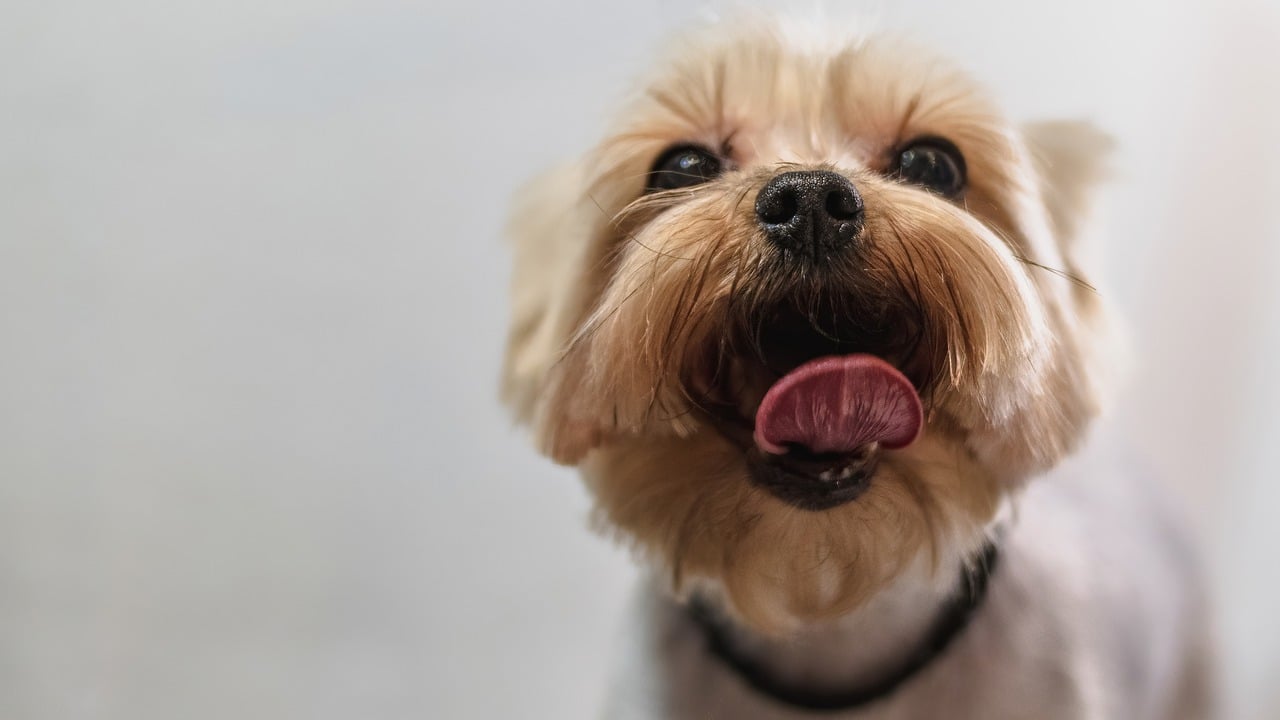
Creating a Positive Grooming Environment
Creating a positive grooming environment is essential for ensuring that your pets feel safe and relaxed during their grooming sessions. Imagine walking into a space that feels calm, smells good, and is filled with familiar sounds. This is the kind of atmosphere you want to create for your furry friends. A stress-free environment not only makes the grooming process easier but also helps your pets associate grooming with positive experiences. So, how do you go about setting up this ideal space?
First off, consider the location. Choose a quiet area in your home where your pets feel comfortable. This could be a spot in the living room or even a designated grooming area in the bathroom. The key is to avoid high-traffic zones where loud noises and distractions might make your pets anxious. You want to create a sanctuary where they can relax while you work on their grooming.
Next, think about the lighting. Soft, natural light is best, as it creates a warm and inviting atmosphere. If natural light isn't an option, consider using soft, warm lamps instead of harsh overhead lights. This gentle lighting can help your pets feel more at ease. Additionally, incorporating familiar scents can contribute to a calming environment. You might use a favorite blanket or toy that carries their scent, making the space feel more like home.
Another important aspect is to minimize noise. Loud sounds can be very unsettling for pets. Try to keep the TV volume low, and if possible, play some soft music in the background. There are even playlists designed specifically for calming pets! By creating a soothing auditory backdrop, you can help reduce anxiety and make the grooming experience more pleasant.
Incorporating positive reinforcement is also crucial. Before you even start grooming, have some treats on hand. Giving your pets a treat before, during, and after grooming sessions can help them associate the process with good things. For instance, after brushing a section of their coat, reward them with a tasty snack or a little playtime. This not only encourages cooperation but also strengthens your bond with your pets.
Moreover, consider using grooming tools that are designed to be gentle on your pet's skin. For example, using a soft brush can help prevent discomfort and make the experience more enjoyable. It's important to be mindful of your pet's reactions during grooming; if they seem uncomfortable, take a break and offer some affection or a treat. This shows them that grooming doesn't have to be a stressful experience.
Lastly, introducing grooming in short, manageable sessions can be extremely beneficial. Instead of overwhelming your pets with a long grooming session, break it down into smaller parts. For instance, start with just a few minutes of brushing or nail clipping. Gradually increase the duration as your pets become more accustomed to the process. This slow introduction can help build their confidence and trust, making future grooming sessions much easier.
In summary, creating a positive grooming environment involves a combination of choosing the right location, ensuring gentle lighting and sounds, using positive reinforcement, and being mindful of your pet's comfort. By taking these steps, you can turn grooming from a daunting task into a delightful bonding experience for both you and your beloved pets.
- How often should I groom my pets? The frequency of grooming depends on your pet's breed and coat type. Long-haired breeds may require grooming several times a week, while short-haired breeds may only need grooming every few weeks.
- What if my pet doesn't like being groomed? Start with short sessions and use treats to encourage cooperation. Gradually increase the grooming time as your pet becomes more comfortable.
- Are there any tools I should avoid? Avoid using tools that are too harsh or uncomfortable for your pet. Always opt for gentle brushes and clippers designed specifically for your pet's coat type.
Using Treats and Rewards
When it comes to grooming your pets, incorporating treats and rewards can make a world of difference. Imagine this: your furry friend sees the grooming tools and immediately thinks it's time for a spa day, not a wrestling match! By using positive reinforcement, you're not just making grooming a more enjoyable experience but also building a stronger bond with your pets. So, how do you effectively use treats and rewards during grooming sessions?
First off, it's essential to choose the right type of treats. Opt for small, soft, and highly palatable options that your pets absolutely love. Think of these treats as little nuggets of joy that can turn a potentially stressful situation into a delightful one. For instance, if your dog goes through a successful brushing session without too much fuss, reward them with a piece of their favorite treat. This positive association helps them understand that grooming is not something to fear, but rather a time for pampering and love.
Next, timing is everything. You want to reward your pets immediately after they exhibit good behavior during grooming. For example, if your cat sits still while you brush them, give them a treat right away. This immediate feedback reinforces the idea that their good behavior leads to tasty rewards. It’s like a little light bulb going off in their heads—“Hey, if I stay calm, I get treats!”
Additionally, consider using a variety of rewards to keep things interesting. Some pets may respond better to verbal praise or petting, while others might be more motivated by food. You can even create a reward chart to track their progress. For instance, if your dog successfully completes a month of grooming sessions with minimal fuss, treat them to a special outing or a new toy. This not only keeps them engaged but also gives you a chance to celebrate their achievements together.
Incorporating playtime as a reward can also be incredibly effective. After a grooming session, take a few minutes to play with your pet. This not only reinforces the idea that grooming leads to fun but also gives them something to look forward to. You can use their favorite toys or even engage in a quick game of fetch or hide-and-seek. This creates a positive cycle where grooming becomes synonymous with play and affection.
Lastly, remember that patience is key. Every pet is different, and some may take longer to acclimate to grooming than others. If your pet seems anxious, take a step back and allow them to adjust at their own pace. Gradually introduce the grooming tools while offering treats, and soon enough, they'll be strutting around like they own the place, eagerly awaiting their next grooming session!
- How often should I groom my pets? It varies by breed and coat type. Generally, long-haired pets require more frequent grooming than short-haired ones.
- What type of treats are best for grooming sessions? Soft, small, and highly palatable treats work best, as they can be given quickly and easily during grooming.
- Can I use regular food as a reward? While regular food can work, it's often better to use special treats that your pet only gets during grooming to keep them motivated.
- What if my pet is still anxious during grooming? Gradually introduce grooming tools and give plenty of positive reinforcement. Patience and consistency are key!
Introducing Grooming Gradually
When it comes to grooming your pets, especially if you have multiple furry friends, introducing the process gradually can be a game-changer. Imagine trying to dive into a cold swimming pool without easing in; it’s a shock to the system! Similarly, pets can feel overwhelmed if they're suddenly thrust into a full grooming session. So, how do we create a smoother transition? Start small and build up their comfort level.
First, let’s talk about the importance of familiarization. Before you even pick up a brush or a clipper, allow your pets to sniff and explore the grooming tools. This simple act can help demystify the objects that might otherwise seem intimidating. You could leave the tools out in a common area where your pets hang out, letting them approach at their own pace. This step is crucial because it builds trust and reduces anxiety.
Next, consider short sessions. Instead of diving into a lengthy grooming routine, start with just a few minutes of brushing or combing. This could be as simple as running a brush through their fur for just 5 minutes. Gradually increase the time as your pets become more accustomed to the sensation and the process. This method not only makes grooming more manageable for you but also creates a positive association for your pets. They’ll start to see grooming as a pleasant experience rather than a chore.
Another effective technique is to pair grooming with positive experiences. For instance, you can give your pets their favorite treats or engage them in playtime right after a grooming session. This reinforces the idea that grooming is a good thing! You might even consider using a clicker to mark the behavior when they stay calm during grooming. Over time, they will associate grooming with rewards, making them more willing participants.
Additionally, it's important to monitor their reactions. If you notice signs of stress—like whining, trying to escape, or hiding—take a step back. This is a signal that you need to slow down and perhaps revert to shorter sessions or more breaks. Patience is key! Every pet is different; some may take to grooming like a fish to water, while others may need more time to adjust.
In conclusion, introducing grooming gradually is all about creating a safe and comfortable space for your pets. By familiarizing them with tools, keeping sessions short, pairing grooming with treats, and being attuned to their reactions, you'll not only ease their anxiety but also foster a more enjoyable grooming experience for everyone involved. Remember, the goal is to make grooming a bonding time rather than a battleground!
- How often should I groom my pets? The frequency of grooming depends on the breed and coat type. Long-haired breeds may need grooming several times a week, while short-haired pets might only need it once a week.
- What if my pet hates being groomed? Gradually introducing grooming and using positive reinforcement can help. If they continue to resist, consider consulting a professional groomer.
- Are there specific tools for different breeds? Yes! Different breeds have unique grooming needs, so it's essential to choose the right tools for your pet's coat type.
Frequently Asked Questions
- How often should I groom my pets?
The frequency of grooming depends on the breed and coat type of your pets. Generally, long-haired breeds may require grooming every 4-6 weeks, while short-haired breeds might only need grooming every 6-8 weeks. Establishing a routine helps keep their coats healthy and reduces shedding.
- What tools do I need for grooming my dogs?
For dog grooming, you’ll need a variety of tools including brushes, combs, clippers, and shampoos. Long-haired dogs benefit from detangling brushes and grooming gloves, while short-haired breeds may only require a rubber brush or shedding tool to remove loose hair.
- Can I use human grooming products on my pets?
No, it’s best to avoid using human grooming products on pets as they can contain ingredients that are harmful to animals. Always opt for pet-specific shampoos and grooming supplies to ensure their safety and comfort.
- How can I make grooming less stressful for my pets?
Creating a calm environment is key! Use treats and rewards to encourage good behavior during grooming sessions. Gradually introduce grooming tools and processes to help your pets get used to them without feeling anxious.
- What should I do if my pet is afraid of grooming?
If your pet shows fear, take it slow! Start with short sessions and use positive reinforcement like treats or praise. Gradually increase the duration of grooming as they become more comfortable. Patience is essential!
- Should I groom my pets myself or hire a professional?
It depends on your comfort level and the specific needs of your pets. If you have the right tools and experience, grooming at home can be rewarding. However, for complex grooming needs or if you’re unsure, hiring a professional groomer can be a great option.
- What are the signs that my pet needs grooming?
Look for signs like excessive shedding, matting of fur, or an unkempt appearance. If your pet is scratching more than usual or has a strong odor, it may be time for a grooming session to address these issues.
- How can I keep my grooming tools clean?
Regularly clean your grooming tools with warm soapy water and disinfect them to prevent the spread of bacteria. Make sure to dry them thoroughly before storing to keep them in good condition for your next grooming session.

